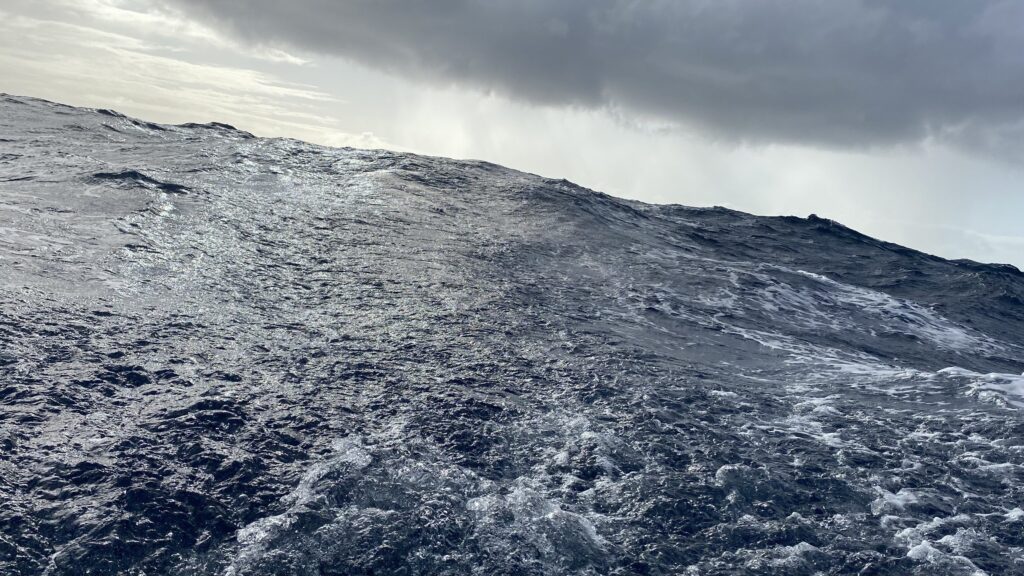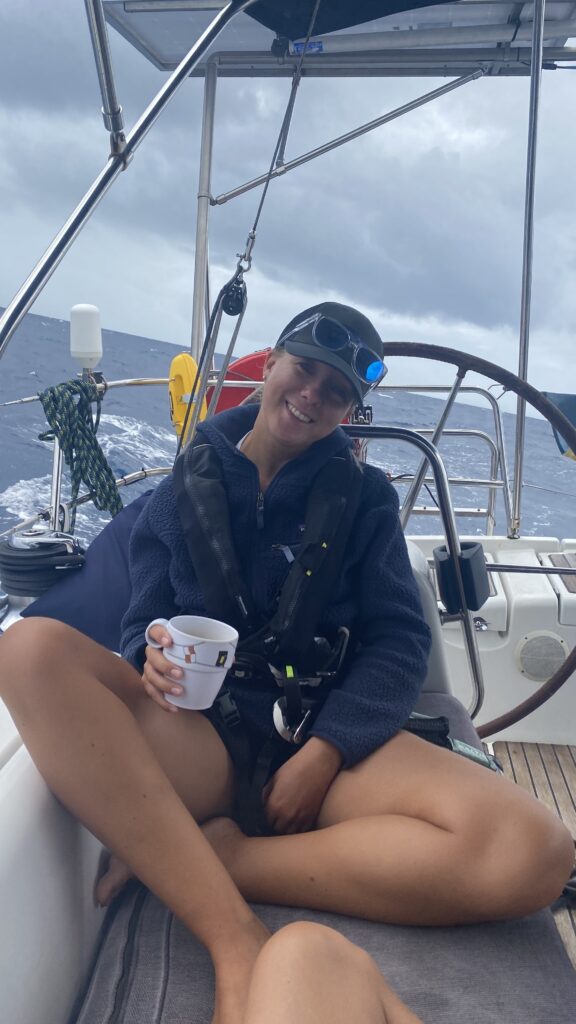When we arrived at the Cocos Keeling Islands we were prepared for a 10 day stop, longer than usual to enjoy our final beachy tropical destination and to rest up for the Indian Ocean which is known to be a crossing that is more uncomfortable than the other ones in the classic circumnavigation route.
All this changed rather quickly though. When we started checking the weather on day two, to get to know the weather patterns in the area and keep a lookout for any abnormalities, we saw a low pressure that was predicted to form and head straight towards our anchorage. As the Cocos Keeling Islands only has one anchorage for yachts, it doesn’t leave room for far too much flexibility when it comes to protection from different wind angles. The predicted low pressure was predicted to send 35 knots of wind our way, blowing from the absolute worst wind angle for this anchorage. Neither was this something that we wished to sail through. But it was far off in the predictions and weather constantly changes.
We reached out to our weather advisor to take his view on the situation as he is very familiar with the Indian Ocean and has provided advise for hundreds of boats crossing this ocean. His message was very clear, head out as fast as you can to create as much room as possible between you and the new system. Safety is always the priority on Puffin, so even though we had looked forward to some relaxing days to recover we switched focus to passage preparations and 36 hours later we lifted the hook at 6 AM just after the sun had gone up. The boats in the World ARC rally, who coincidentally where at Cocos Keeling at the same time as us, had received the same message as us and all but one boat left the anchorage this same morning in the first hour of daylight.
We navigated our way out of the bay and through the corals before we soon hoisted our sails. It didn’t take long to understand that this ocean was true to its reputation, it was bumpy, splashy and rather uncomfortable right from the start and it would soon turn out that this was actually the comfortable part.
36 hours into our crossing, sailing with two reefs in the main and a reefed genoa trying to make as much progress west as possible, it became clear that the developing weather system didn’t have the same idea as the forecasts, instead it was heading straight for us. We did everything we could to go as far south as we could during the remaining hours before it hit, to come as far away from its center as possible and were also quickly learning that this sea was full of squalls that would roll in one after the other.
To be honest we weren’t very cocky in these hours, living on a boat that is so bumpy that even the task of getting dressed or lifting a foot to put on a shoe but knowing that things were just going to get harder from here. We were both giving each other pep talks about how the forecasted winds were not stronger than the ones we had encountered before (but both silently adding the factor of the wave hight increasing the discomfort significantly). We soon took down the main completely, sailed only on a small part of the genoa and doing everything we could to make sure that Puffin was not too overpowered. Our weather advisor was sending us daily weather updates with short encouragements about how many hours of “survival” (his words) remained before conditions would become more bearable.
For days we were just holding on, being absolutely drenched by both waves and rain and both of us sleeping every minute possible of our off watches, probably for equal amounts of exhaustion, weather escape and to take use of how much faster time passes when sleeping. We were eating the simplest things we could think of onboard and during the two roughest days we’ll have to admit that our lunch consisted of granola bars, coca-cola and half a bag of chips. The boat was a mess after all the things having been thrown from side to side in the waves that had averaged 4,6 meters high over the last days and on every available hook or handle there were clothes hanging to dry (even though this sometimes feels impossible in a damp boat where clothes only have a maximum of two hours off before being redressed for a new drenching shift).
Our big encouragement along these days when we felt like we were living in a washing machine (uncomfortably thrown from side to side while splashed down by waves and sprayed by rain water) was the words of encouragement coming our way. Our buddies on another boat who had left Cocos Keeling three days ahead of us were cheering us on as they could see our position in the weather, the World ARC fleets who were just ahead of us were checking in on us to see that we were managing the tough conditions and friends and family back home were sending news articles and updates from home to distract our thoughts from the wet puddles were standing in.
Once reaching halfway of the crossing we could finally see that all conditions were expected to slowly improve. The wave height would slowly decline, even if only by roughly 10 cm per day, and the winds were expected to reduce as well. Resuming to the more manageable winds in their 20s (knots). As we celebrated halfway of the crossing we could finally brew a pot of coffee again, making us almost human again after the five days having gone without coffee. In the spirit of a halfway celebration we dug out a package of cookies to, having a classic afternoon “fika” in the first rays of sunshine we had seen in days. Being able to bring up the cockpit cushions for the first time (ignoring the fact that they minutes later would need to be quickly thrown down as the next squall would hit) and sit down together with a cup of coffee in hand and together try to laugh off the last few days was such a significant high of the trip that it almost gave us enough of an energy boost to handle the rip in the genoa that soon emerged.
Our life remained squally, splashy and bumpy for a long time but each day was a baby step towards more comfortable and bearable sailing and living. Undoubtedly we were very keen on our arrival and were closely monitoring our progress and calculating how many days and nights that remained. As we were trying to calculate our ETA, mainly to ensure a good speed for a daylight arrival and to match customs procedures, the forecasts were increasingly unanimous on the fact that the wind would die towards the end of the crossing. Could this sea really deliver anything other than hard winds?
Sure enough though, as we were approaching the last stretch, had passed Rodrigues island and had less than 300 NM left the wind strengths were slowly but surely decreasing. We were shaking out the reefs as soon as it felt safe to do so, tweaking and adjusting to squeeze out all the speed possible from the wind doing our best to sail while the wind was there and leave motoring for the very last hours.
Finally, after 16 days we made it to Reunion Island and landfall has probably never felt better.
Indian Ocean, you were tough on both us and Puffin. In addition you left quite a few memorable marks:
- Tear in Genoa
- The entire stove fell off as the rocking back and forth had worn through the metal knobs it was hung on
- Leaking deck shroud mount
- Lost MOB buoy overboard
- Broken life buoy light
- Broken hydro generator mount
- Broken cockpit speakers
Let’s hope a strong Gin & Tonic and a good night’s sleep will soften the memories from the crossing. We’re glad that we only have one leg left on this ocean.



